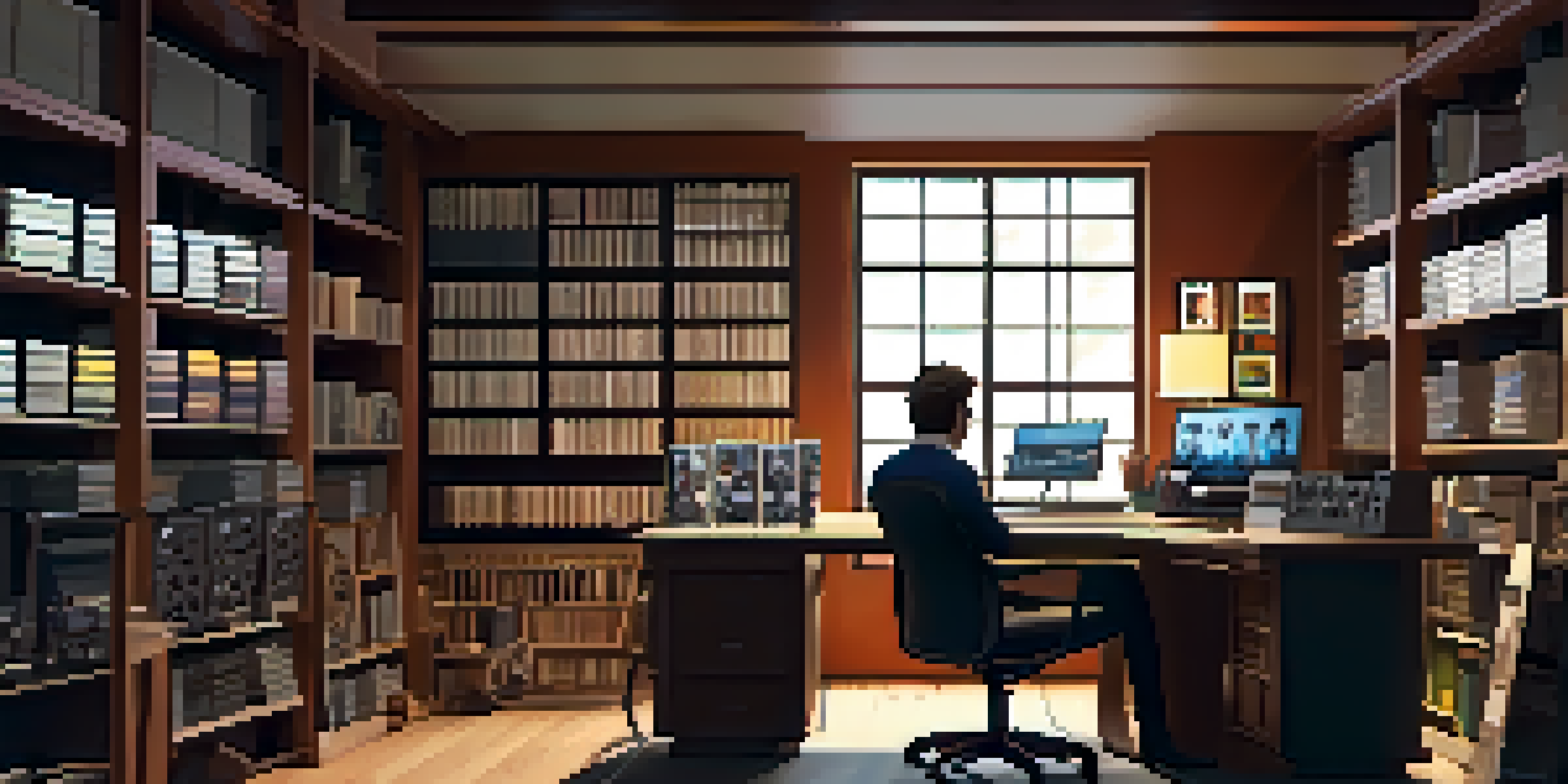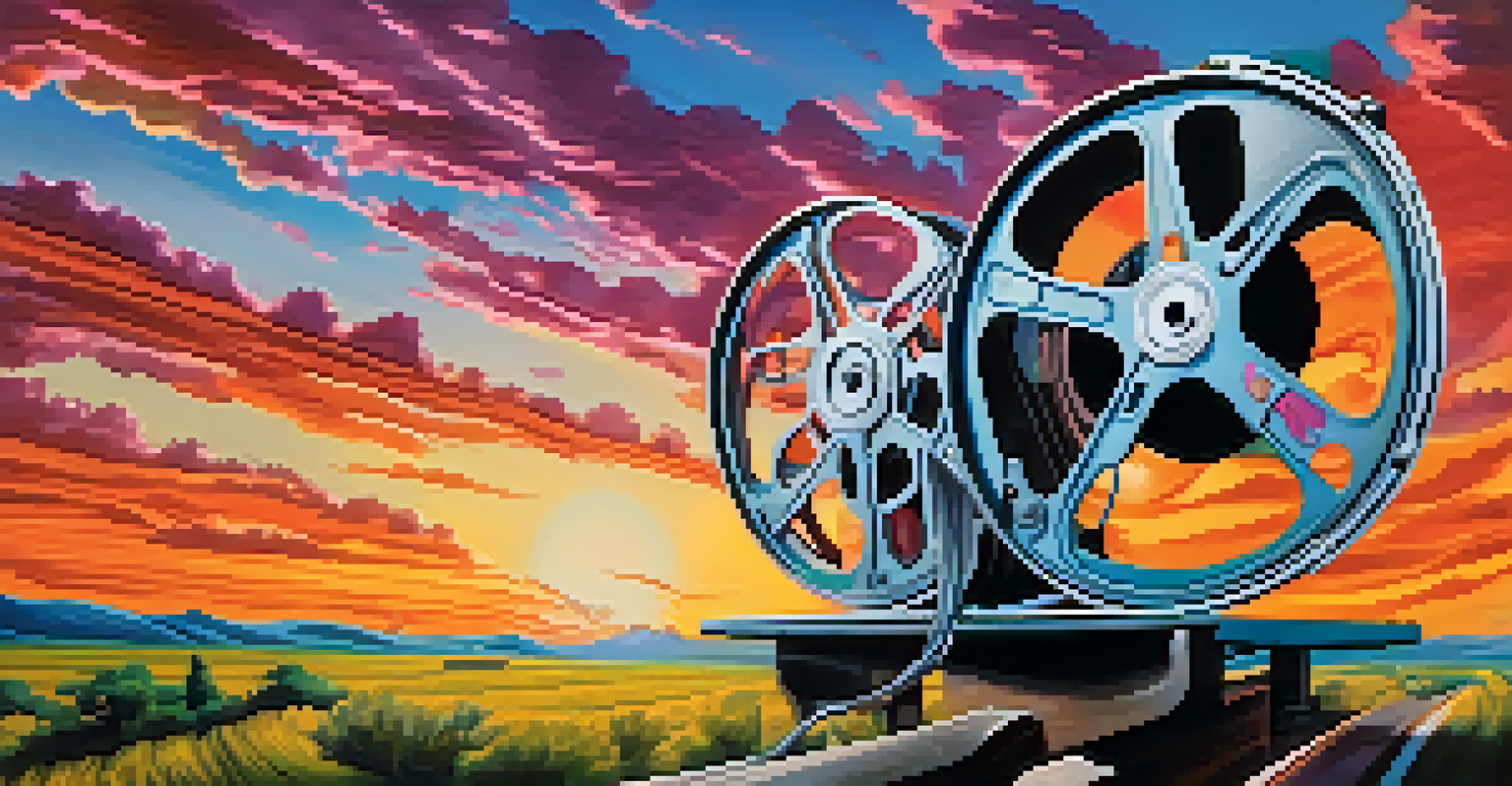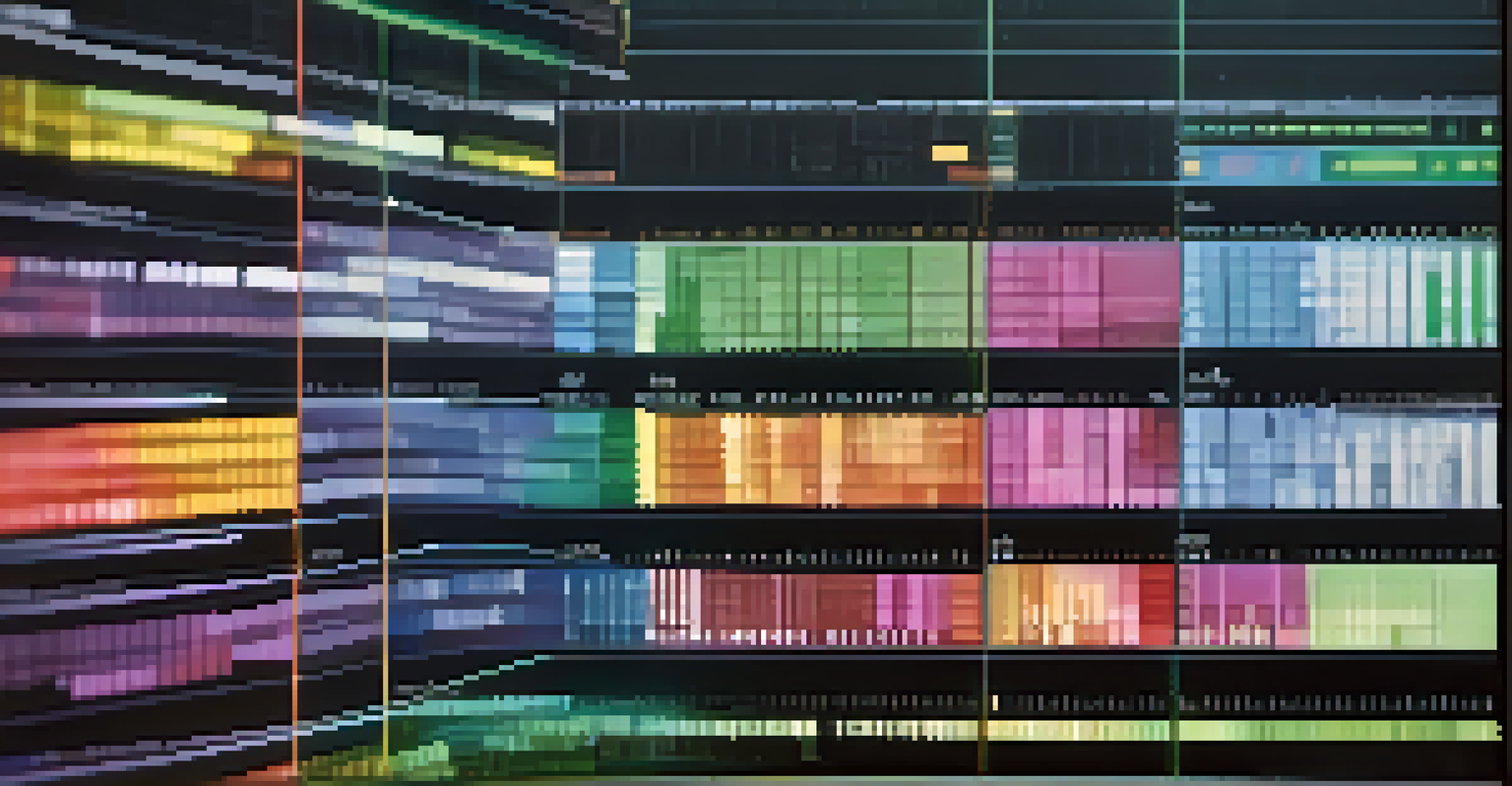Directors and Their Role in Shaping Film Editing Techniques

Understanding the Director's Vision in Film Editing
The director's vision is the cornerstone of any film project, guiding every aspect of production, including editing. They provide the creative blueprint that editors follow, ensuring the final cut aligns with their artistic intent. By communicating their ideas clearly, directors can influence how scenes are cut together, impacting pacing and emotional resonance.
Editing is like a puzzle; it takes patience and vision to see how the pieces fit together.
For instance, a director may envision a fast-paced action sequence that requires quick cuts to build tension. In contrast, a drama might benefit from longer takes that allow the audience to savor emotional performances. This vision shapes not just the editing style but the overall narrative flow of the film.
Ultimately, when directors and editors collaborate effectively, they create a cohesive story that resonates with viewers. This partnership is essential in translating a director's abstract ideas into a tangible viewing experience.
The Role of Editing in Shaping Narrative Structure
Editing plays a vital role in shaping a film's narrative structure, and directors are key players in this process. By deciding which scenes to include and how to arrange them, directors influence the story's pacing and emotional impact. This decision-making can transform a straightforward narrative into a complex, engaging experience.

For example, directors like Quentin Tarantino are known for their non-linear storytelling, where the editing style reflects the film's themes. The disjointed narrative can create suspense and intrigue, keeping viewers on the edge of their seats. This approach demonstrates how editing can be a powerful tool in storytelling.
Directors Shape Editing Vision
The director's vision is essential in guiding film editing, influencing pacing and emotional impact.
Moreover, the rhythm of editing can evoke different emotional responses, guiding the audience's reactions throughout the film. A well-edited sequence can amplify tension or provide relief, showcasing the director's understanding of how pacing affects viewer engagement.
Directors and Their Signature Editing Styles
Many directors develop signature editing styles that become synonymous with their films. These unique approaches not only establish their artistic identity but also set expectations for audiences. For example, director Christopher Nolan often employs editing techniques that play with time, creating a sense of non-linearity that challenges viewers.
The director's job is to bring the script to life, and editing is where that vision is truly realized.
In films like 'Inception' and 'Memento', Nolan's use of editing not only supports the narrative but also enhances the thematic depth. The editing style becomes an extension of the story, engaging audiences in a way that is uniquely Nolan. This demonstrates how a director's personal touch can redefine conventional editing practices.
Similarly, directors like Edgar Wright are known for their rapid-fire editing and comedic timing, which contribute to the film's overall tone. Such distinctive styles not only entertain but also influence emerging filmmakers, showcasing the lasting impact of a director's vision on film editing techniques.
Collaboration Between Directors and Editors
The collaboration between directors and editors is crucial in achieving a film's desired outcome. This partnership often involves numerous discussions and screenings to refine the narrative and pacing. Directors rely on editors to bring their vision to life, making it essential for both parties to maintain open communication.
During the editing process, directors may provide feedback on initial cuts, guiding editors on what works and what needs adjustment. This iterative process allows for creative exploration, as both the director and editor work together to find the best way to convey the story. The result is a polished final product that reflects both their inputs.
Collaboration Enhances Final Cut
Effective collaboration between directors and editors refines the narrative, leading to a polished final product.
Furthermore, this collaboration can lead to unexpected creative breakthroughs. Editors may propose alternate cuts or pacing changes that enhance the film, showcasing how the director's openness to collaboration can lead to a more refined final product.
Influence of Technology on Editing Techniques
As technology evolves, so do film editing techniques, and directors are at the forefront of this transformation. The rise of digital editing software has revolutionized how films are cut, allowing for greater flexibility and creativity. Directors can now experiment with various styles and techniques that were once limited by the constraints of analog editing.
For instance, non-linear editing systems enable directors to easily rearrange scenes, facilitating a more dynamic approach to storytelling. This technological advancement allows directors to realize their vision more effectively, leading to innovative editing choices that enhance the narrative.
Additionally, the accessibility of editing tools has empowered independent filmmakers to explore new techniques without the need for extensive resources. This democratization of filmmaking means that diverse voices can contribute to the evolution of film editing, showcasing a broader range of styles and narratives.
Case Studies: Directors Who Innovated Editing Techniques
Several directors have made significant contributions to film editing techniques, leaving a lasting impact on the industry. One notable example is Martin Scorsese, whose use of jump cuts and freeze frames in films like 'Goodfellas' revolutionized how filmmakers approach narrative pacing and character development. His innovative techniques have influenced countless directors since.
Another example is the work of Agnes Varda, who incorporated documentary-style editing into her narrative films. Her unique approach blurred the lines between fiction and reality, challenging traditional storytelling methods. This innovation inspired a generation of filmmakers to experiment with editing styles that reflect their unique perspectives.
Technology Transforms Editing Styles
Advancements in technology empower directors to experiment with innovative editing techniques and broaden storytelling possibilities.
These case studies remind us that directors are not just storytellers but also pioneers of editing techniques. Their willingness to push boundaries encourages creativity and innovation within the filmmaking community, inspiring future generations to explore new possibilities.
The Future of Film Editing and Directorial Influence
As the film industry continues to evolve, the role of directors in shaping editing techniques will remain crucial. With advancements in technology and changes in audience preferences, directors must adapt their strategies to meet new challenges. This adaptability will drive the evolution of editing styles and practices in the years to come.
Emerging trends, such as virtual reality and interactive storytelling, present new opportunities for directors to experiment with editing. These innovations may lead to entirely new forms of narrative structure that challenge traditional filmmaking norms. Directors who embrace these changes will likely redefine the future of editing in exciting ways.

Ultimately, the relationship between directors and film editing will continue to be a dynamic partnership. As directors explore new horizons, they will play a vital role in shaping the future of film editing techniques, ensuring that storytelling remains at the heart of the cinematic experience.